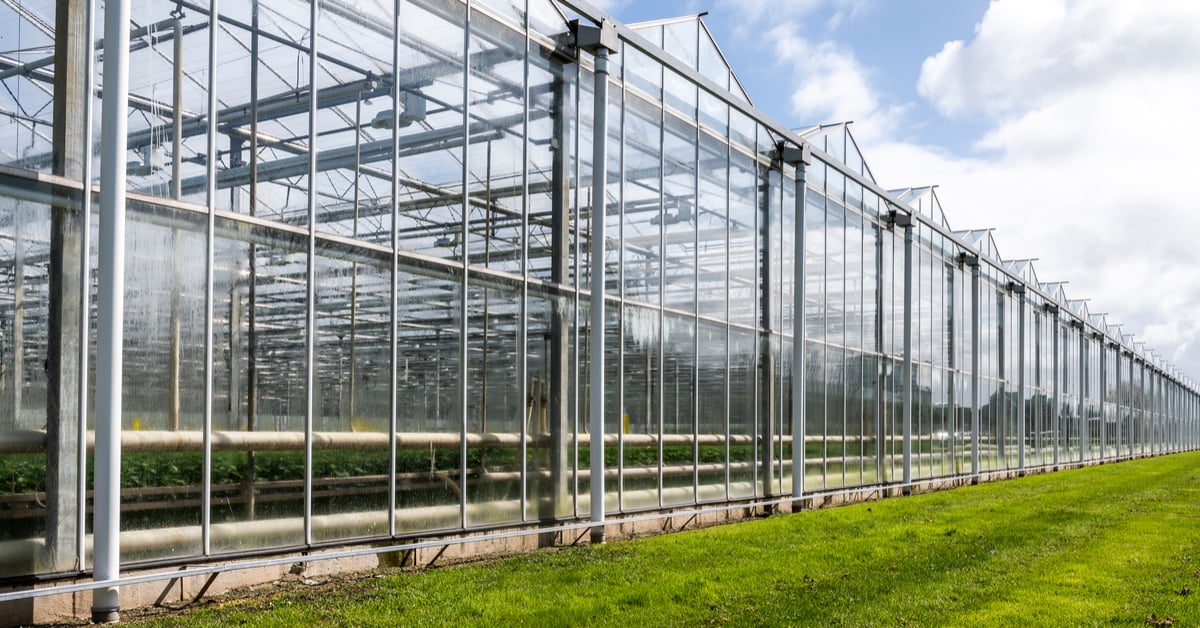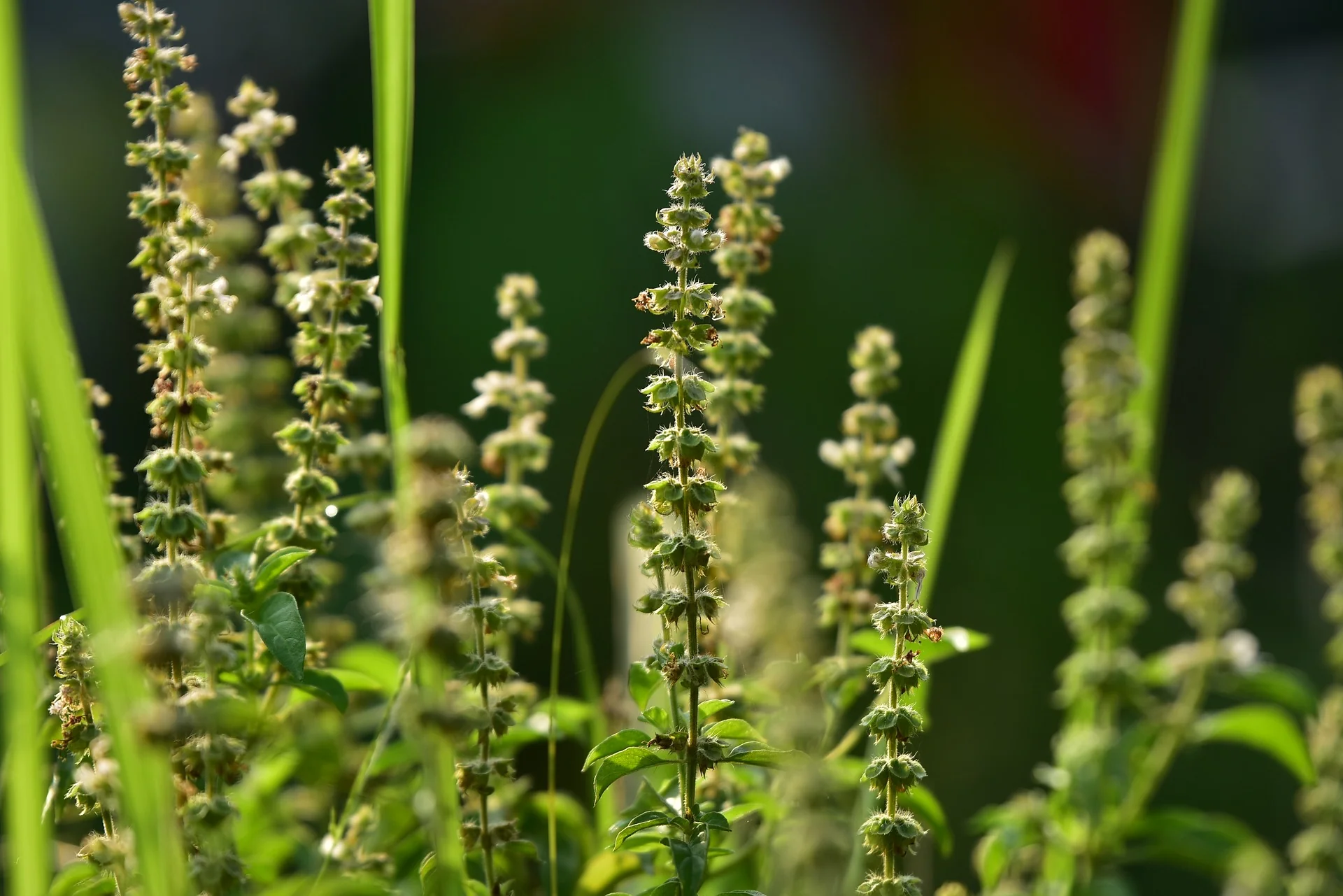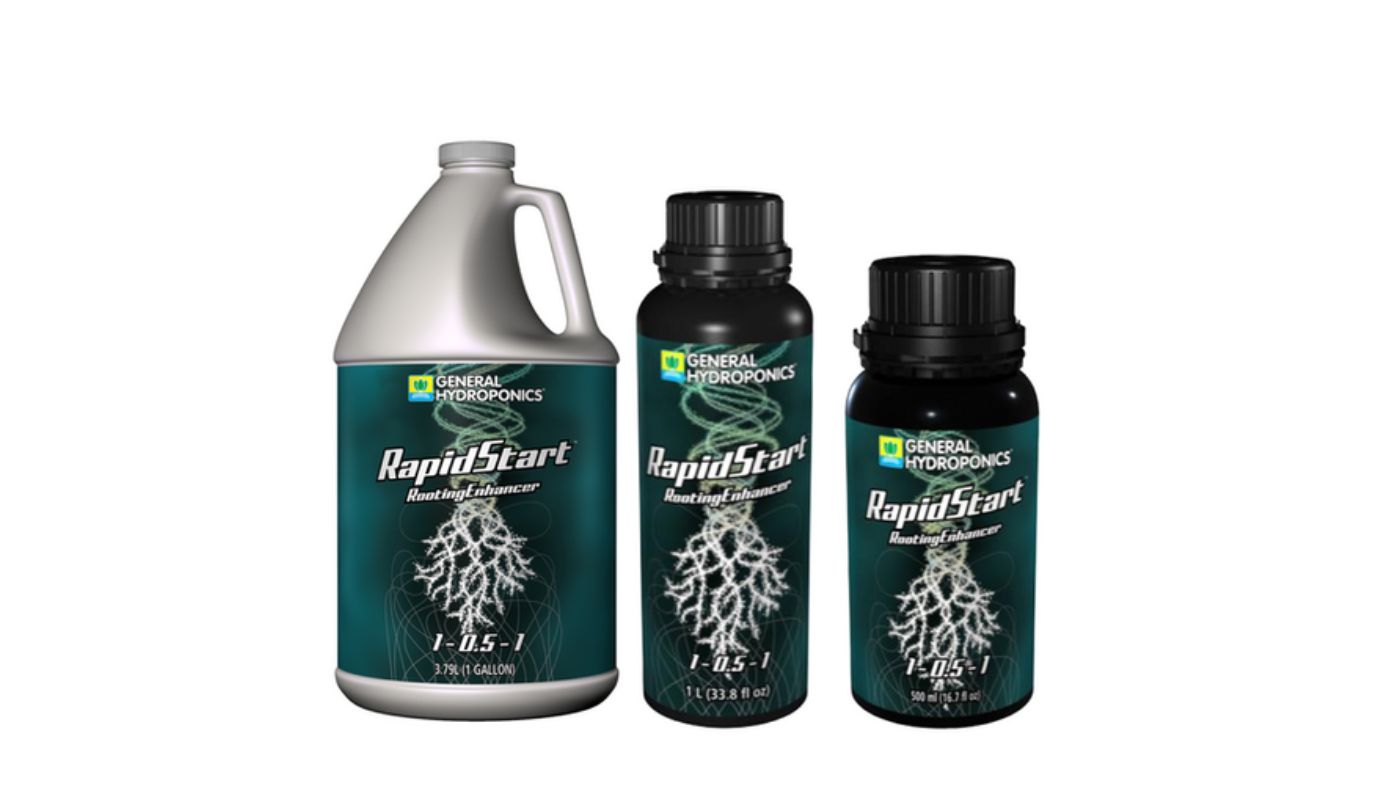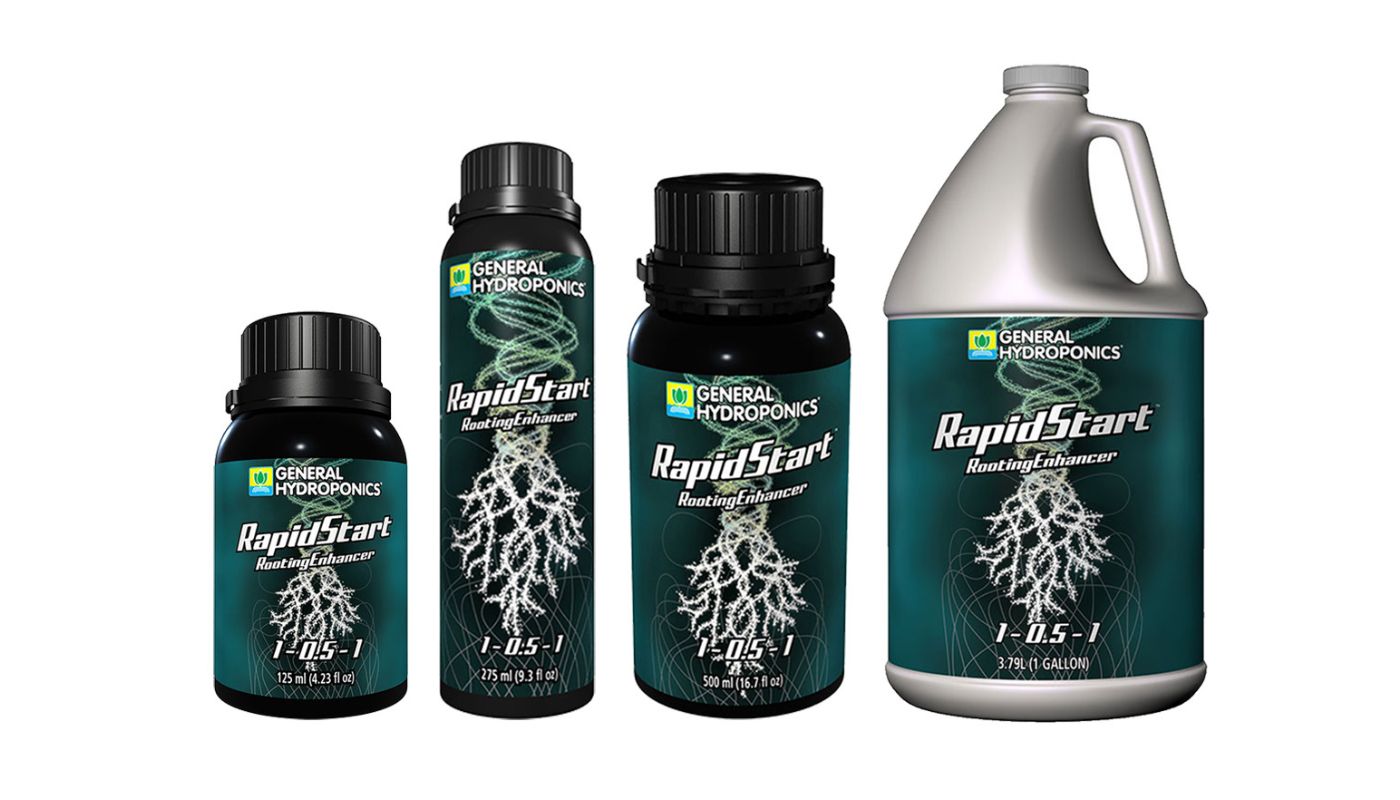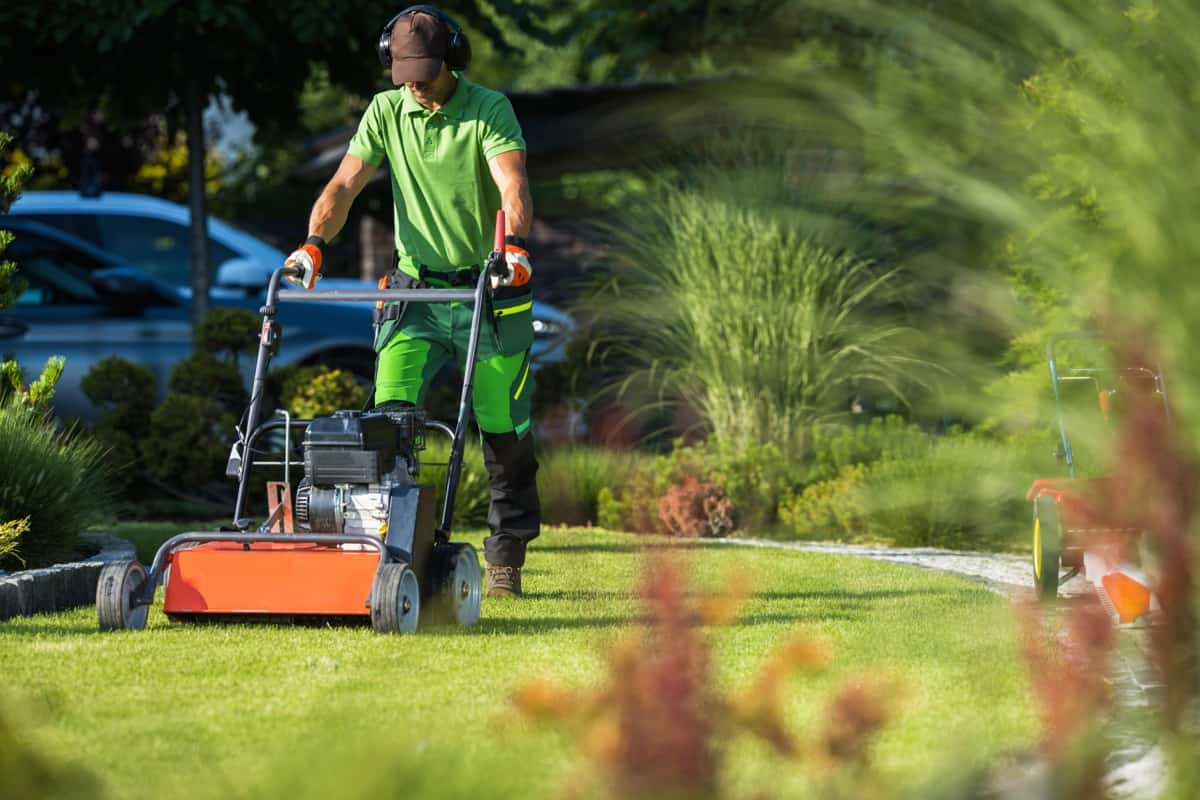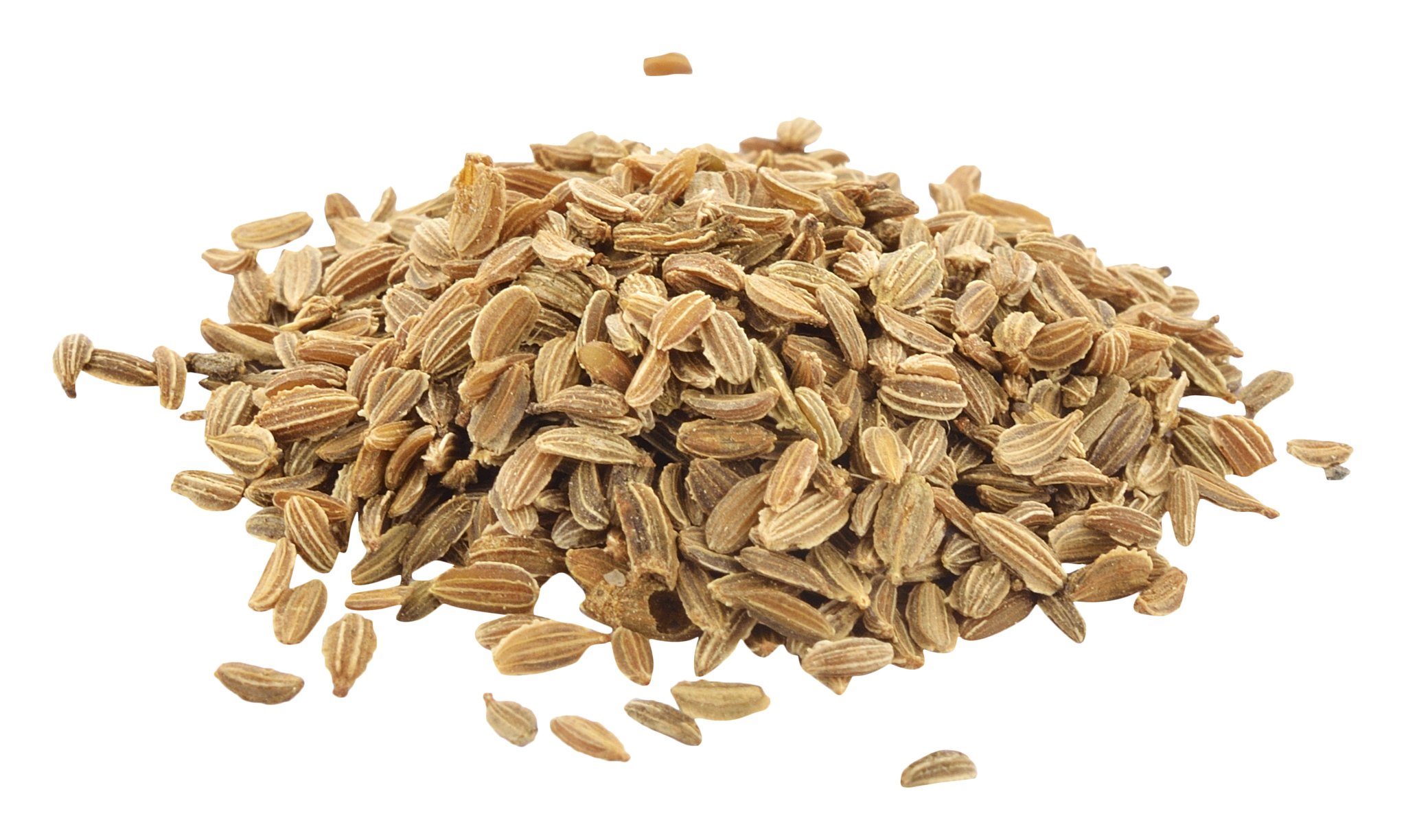Home>Gardening Tips and Tricks>Eco-Friendly Gardening>How To Get Started In Hydroponics
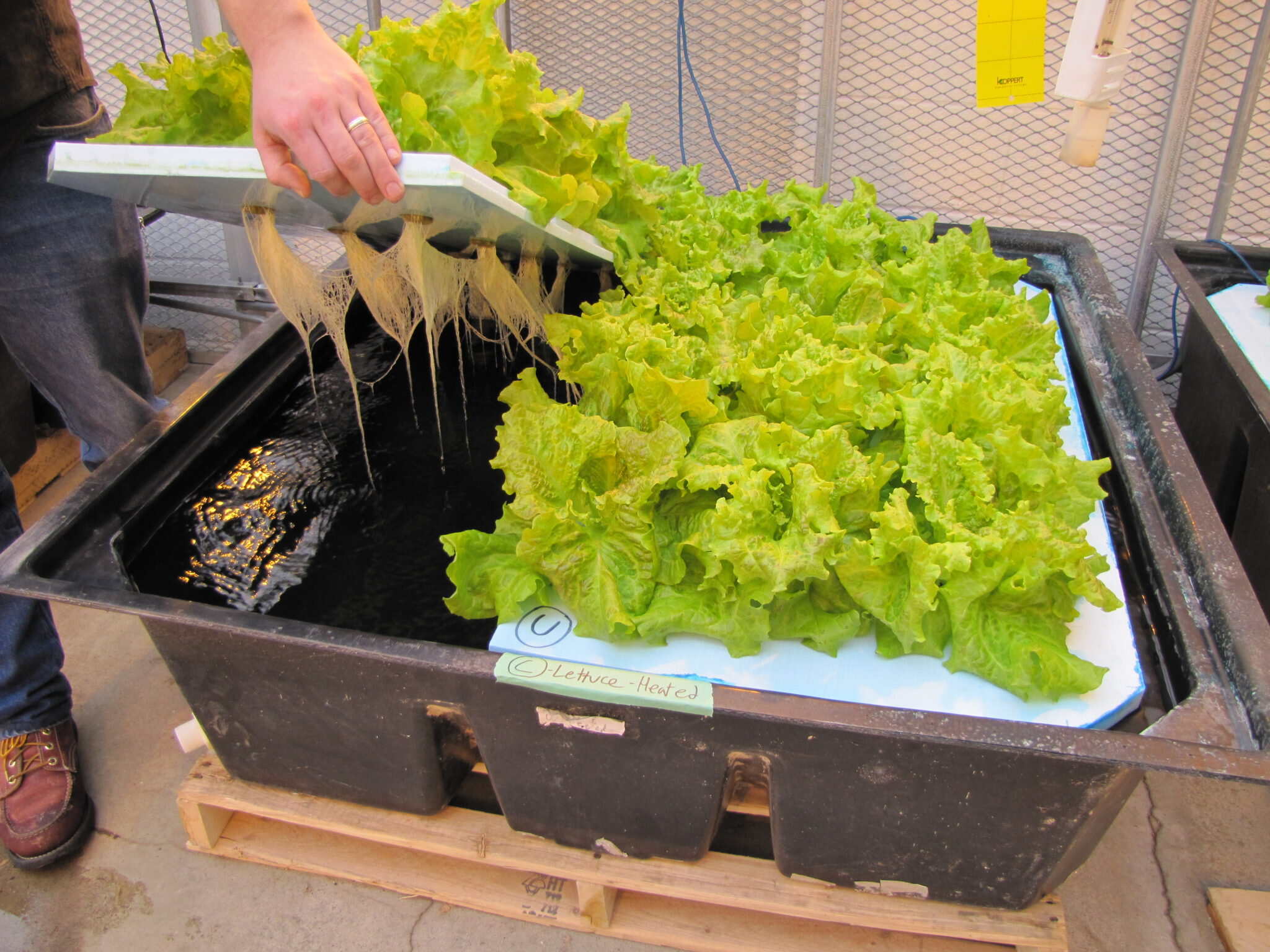

Eco-Friendly Gardening
How To Get Started In Hydroponics
Modified: January 22, 2024
Learn how to get started with eco-friendly gardening using hydroponics. Discover the benefits of this sustainable gardening method and start growing your own plants indoors!
(Many of the links in this article redirect to a specific reviewed product. Your purchase of these products through affiliate links helps to generate commission for Chicagolandgardening.com, at no extra cost. Learn more)
Table of Contents
Introduction
Welcome to the world of hydroponics! If you’re interested in gardening but don’t have access to a traditional outdoor space or want to minimize water usage, then hydroponics is the perfect solution for you. It’s an innovative method of growing plants without soil, using a nutrient-rich water solution instead. Not only does hydroponics provide an efficient and environmentally-friendly way of gardening, but it also allows you to grow a wide variety of plants, regardless of the location or climate.
In this article, we will explore the fascinating world of hydroponics and guide you on how to get started. Whether you’re a gardening enthusiast or a beginner looking for a new hobby, hydroponics offers endless possibilities and rewards.
By understanding the basics of hydroponics and following the right techniques, you can achieve impressive yields, conserve water, eliminate the need for pesticides, and grow your own fresh produce all year round. So, let’s dive in and discover the wonders of hydroponic gardening!
In the following sections, we’ll cover the fundamental aspects of hydroponics, including the benefits it offers, how to choose the right system, setting up your garden, selecting suitable plants, managing nutrient solutions and pH levels, optimizing light and temperature, and ensuring the successful maintenance of your hydroponic garden.
What is Hydroponics?
Hydroponics is a method of growing plants without traditional soil. Instead of relying on soil as a medium for nutrient absorption, hydroponic plants are cultivated in a soilless system where water serves as the primary carrier of nutrients. In this controlled environment, plants receive all the essential elements they need to thrive, resulting in faster growth rates and higher yields.
Hydroponic systems are designed to provide a balance of water, nutrients, oxygen, and light to the plants. There are several different types of hydroponic systems, each with its own unique features and advantages. Common types of hydroponic systems include nutrient film technique (NFT), deep water culture (DWC), aeroponics, and drip irrigation.
One of the key advantages of hydroponics is water conservation. Compared to traditional soil-based gardening, hydroponics uses significantly less water because it recirculates the nutrient solution through the system. Additionally, hydroponic systems allow for precise control over nutrient levels, pH, and other environmental factors. This level of control reduces the risk of nutrient deficiencies or toxicities and helps plants reach their maximum potential.
Not only does hydroponics offer efficient water usage, but it also eliminates the need for pesticides and herbicides. In a carefully controlled hydroponic environment, pests and diseases can be easily monitored and controlled, reducing the reliance on harmful chemicals. By avoiding the use of synthetic pesticides, hydroponics contributes to a cleaner and healthier environment.
Hydroponics is a versatile gardening method that can be practiced in various settings. Whether you have limited outdoor space, live in an urban environment, or want to grow plants year-round, hydroponics enables you to cultivate a wide range of crops, from leafy greens and herbs to fruits and flowers.
Now that you understand the basic concept of hydroponics, it’s time to explore the numerous benefits this innovative gardening method has to offer.
Benefits of Hydroponics
Hydroponics offers a multitude of benefits compared to traditional soil-based gardening methods. Let’s dive into the advantages of hydroponics:
- Water Conservation: Hydroponics allows for efficient water usage, with studies showing that it can save up to 90% more water compared to traditional soil gardening. The recirculation system in hydroponics minimizes water wastage, making it an environmentally-friendly choice.
- Higher Yields: Plants grown hydroponically tend to grow faster and produce higher yields compared to their soil-grown counterparts. This is due to the optimal balance of nutrients, water, and oxygen that hydroponic systems provide, allowing plants to focus on growth and productivity.
- Year-round Growing: Hydroponics eliminates the dependence on seasonal changes, allowing you to grow plants all year round. By controlling the growing environment, you can provide the ideal conditions for plants to thrive, no matter the weather or climate outside.
- Space Efficiency: Hydroponic systems can be set up in minimal space, making it a viable option for urban dwellers with limited outdoor areas or apartment balconies. With vertical farming techniques, you can maximize space utilization and grow a substantial amount of crops in a small footprint.
- Pesticide-Free Cultivation: In hydroponic systems, pests and diseases can be monitored and controlled more effectively, reducing the reliance on pesticides and herbicides. This offers a healthier and safer option, ensuring the produce is free from harmful synthetic chemicals.
- Reduced Weeding: As hydroponics eliminates the need for soil, there is no possibility of weeds infiltrating the growing system. This eliminates the time and effort spent on weeding, allowing you to focus on plant care and maintenance instead.
These are just a few of the many benefits that hydroponics has to offer. Whether you’re a small-scale home gardener or a commercial farmer, hydroponics provides a sustainable and efficient way to grow fresh, nutritious, and high-quality produce. Now that you’re aware of the advantages, let’s explore how to choose the right hydroponic system for your needs.
Choosing a Hydroponic System
When it comes to hydroponics, there are various systems to choose from, each with its own pros and cons. The system you select will depend on factors such as your available space, budget, the types of plants you want to grow, and your level of expertise. Here are some popular hydroponic systems to consider:
- Nutrient Film Technique (NFT): In an NFT system, a thin film of nutrient-rich water flows continuously over the roots of the plants. This method is known for its simplicity and efficiency, as it delivers constant nutrients and oxygen while requiring minimal water usage. NFT systems are best suited for small to medium-sized plants with shallow root systems.
- Deep Water Culture (DWC): DWC systems involve suspending plant roots in a nutrient solution, allowing them to directly access oxygen. This method is beginner-friendly and cost-effective, making it a popular choice for home hydroponics. DWC is ideal for growing leafy greens and herbs, but it can also support larger plants with proper support.
- Aeroponics: Aeroponic systems involve suspending plant roots in an oxygenated mist or fog, providing a high level of oxygen and nutrient absorption. Aeroponics offers faster growth rates and higher yields, making it an advanced option for experienced growers. This system works best for plants with short harvest cycles and small root structures.
- Drip Irrigation: Drip systems deliver nutrient-rich water directly to each plant by using drip emitters. This method is versatile and suitable for various plant sizes and types. Drip irrigation is relatively easy to set up and maintain, making it a popular choice for both beginners and experienced growers.
- Vertical Systems: Vertical hydroponic systems maximize space utilization by growing plants vertically. They are perfect for small spaces and urban gardens, utilizing walls or towers to grow a large number of plants. Vertical systems can accommodate various hydroponic techniques, including NFT, DWC, and drip irrigation.
When selecting a hydroponic system, consider factors such as cost, complexity, scalability, and the specific plants you want to grow. It’s also essential to ensure that the system you choose is compatible with your available space and resources. Beginner growers may want to start with simpler systems like DWC or drip irrigation, while experienced growers might experiment with more advanced setups like aeroponics or NFT.
Additionally, research and educate yourself on the maintenance requirements and potential challenges of each system. Understanding the intricacies of the system will help you make an informed decision and increase your chances of successful hydroponic gardening.
Now that you have an idea of the different hydroponic systems available, it’s time to move on to the next step: setting up your hydroponic garden.
Setting Up Your Hydroponic Garden
Setting up your hydroponic garden involves several key steps to ensure a successful and thriving cultivation environment. Here’s a guide to help you get started:
- Choose a Suitable Location: Select a location that receives ample sunlight or invest in artificial grow lights. Ensure that the space is well-ventilated and has a stable temperature. Additionally, consider the access to water source and electrical outlets.
- Set Up the Growing Area: Clear the designated area and prepare the necessary infrastructure. Set up tables, shelves, or racks to hold your hydroponic systems. Ensure that the area is level to prevent any uneven water distribution.
- Install the Hydroponic System: Follow the manufacturer’s instructions to assemble and install your chosen hydroponic system. Ensure that it is securely anchored and that all components are properly connected.
- Prepare the Nutrient Solution: Mix the required nutrients in the exact proportions specified by the manufacturer. Use a reliable pH meter to adjust the pH level of the solution to the appropriate range for your plants.
- Plant Your Seeds or Seedlings: Prepare your seeds or seedlings according to the instructions provided for each plant variety. Place them in your chosen hydroponic system, following the appropriate spacing guidelines.
- Monitor and Adjust: Regularly check the nutrient solution levels, pH, and temperature. Adjust as necessary to maintain optimal conditions for plant growth. Keep track of the progress and make adjustments based on the specific needs of your plants.
- Maintain Proper Lighting: If relying on artificial lighting, ensure that your plants receive the right intensity and duration. Different plants have varying light requirements, so research the recommended lighting regimen for your specific crop.
- Manage Water and Nutrient Levels: Monitor the water levels in your hydroponic system and replenish as needed. Regularly check the nutrient solution levels and adjust accordingly to avoid imbalances or deficiencies.
- Control Pests and Diseases: Implement preventive measures such as maintaining cleanliness and practicing good hygiene. Monitor your plants for any signs of pests or diseases, and take prompt action if necessary to protect the health of your crops.
- Harvest and Enjoy: Once your plants reach maturity, harvest them at the appropriate stage. Enjoy the fruits of your labor and savor the satisfaction of growing your own fresh produce.
Remember that each plant variety may have different requirements, so it’s essential to research the specific needs of the plants you are cultivating. As you gain experience and knowledge, you can refine your hydroponic setup to optimize growth and maximize yields.
Now that your hydroponic garden is set up, it’s time to delve into the world of plant selection. In the next section, we will explore the factors to consider when selecting the right plants for hydroponics.
Selecting the Right Plants for Hydroponics
When it comes to selecting plants for your hydroponic garden, there are a few key factors to consider. By choosing the right plants, you can ensure optimal growth and a bountiful harvest. Here’s what you need to know:
Plant Size: Consider the space available in your hydroponic system when selecting plants. Smaller plants like leafy greens, herbs, and strawberries are well-suited for compact systems, while larger plants like tomatoes and peppers require larger, more robust setups.
Growth Time: Different plants have varying growth cycles. Some crops, such as lettuce and herbs, have shorter growth times and can be harvested multiple times throughout the growing season. On the other hand, fruits like tomatoes and cucumbers take longer to mature and require more patience and space.
Light Requirements: Understand the light needs of the plants you want to grow. Some plants thrive in full sun or require intense artificial lighting, while others can tolerate lower light levels or prefer shade. Adjust your lighting setup accordingly to ensure optimal growth conditions.
Nutrient Requirements: Different plants have varying nutrient needs. Some crops, like tomatoes and cucumbers, are heavy feeders and require a nutrient solution with higher nutrient concentrations. Leafy greens, on the other hand, generally have lighter nutrient requirements. Ensure that you choose a nutrient solution appropriate for the plants you intend to grow.
Disease Resistance: Consider the disease resistance of the plants you select. Some varieties have natural resistance to certain pests and diseases, reducing the need for chemical interventions. By choosing disease-resistant plants, you can promote a healthier garden ecosystem.
Taste and Preference: Ultimately, choose plants that you enjoy eating and will be excited to harvest. Hydroponics offers the opportunity to grow a wide variety of crops, from fresh herbs and leafy greens to flavorful fruits and vegetables. Experiment with different plant varieties and explore new flavors to enhance your culinary creations.
Some popular plants that thrive in hydroponic systems include lettuce, spinach, kale, basil, mint, tomatoes, peppers, cucumbers, strawberries, and various herbs. However, the choices are not limited to these options, and you can explore an extensive range of plants depending on your preferences and growing conditions.
When selecting seeds or seedlings, look for varieties specifically suited for hydroponic cultivation. These varieties are often labeled as “hydroponic” or “greenhouse” varieties and have been bred to thrive in soilless environments.
Remember, hydroponics allows for year-round gardening, so you can experiment with different plant varieties and continuously refine your crop selection. Research the specific needs of the plants you choose, follow proper planting guidelines, and provide the optimal growing conditions to ensure successful hydroponic gardening.
Now that you have a good understanding of plant selection, let’s move on to the critical aspect of nutrient solutions and managing pH levels in hydroponics.
Nutrient Solutions and pH Levels
In hydroponic gardening, nutrient solutions play a vital role in providing plants with the essential elements they need to grow and thrive. These solutions contain a carefully balanced blend of macro and micronutrients that ensure optimal plant nutrition. Additionally, maintaining the appropriate pH level is crucial for nutrient availability and plant health.
Creating a Nutrient Solution: Nutrient solutions can be either commercially prepared or mixed from individual nutrient salts. Commercial nutrient solutions are convenient and formulated to meet the requirements of different plant varieties. If mixing your own solution, ensure accurate measurements and follow a nutrient recipe designed for hydroponic use. Adjust the strength of the solution based on the growth phase of your plants.
Macronutrients and Micronutrients: Nutrient solutions typically contain three primary macronutrients: nitrogen (N), phosphorus (P), and potassium (K). These macronutrients are essential for plant growth, development, and overall health. In addition, micronutrients such as magnesium (Mg), calcium (Ca), iron (Fe), and zinc (Zn) are also necessary for proper plant growth. Follow the manufacturer’s instructions or nutrient recipes to ensure a well-balanced solution.
Monitoring pH Levels: pH is a measure of the acidity or alkalinity of a solution and affects nutrient availability to plants. Hydroponic systems typically require a slightly acidic pH range between 5.5 and 6.5. Use a reliable pH meter to regularly test the pH level of your nutrient solution. If the pH is too high (alkaline), you can lower it by adding a pH-lowering solution. If it’s too low (acidic), you can raise it by adding a pH-raising solution or adjusting the nutrient recipe accordingly.
Importance of pH in Nutrient Uptake: pH affects nutrient solubility and thus impacts the availability of essential elements to plants. At inappropriate pH levels, plants may experience nutrient deficiencies, even if the required nutrients are present in the solution. Improper pH can also lead to nutrient imbalances or toxicities. Monitoring and maintaining the correct pH range is crucial for ensuring optimal nutrient uptake and healthy plant growth.
Regular Nutrient Solution Maintenance: Nutrient solutions should be regularly checked and adjusted to maintain appropriate nutrient levels and pH. As plants take up nutrients, the solution can become imbalanced and depleted. Monitor the EC (electrical conductivity) of the solution, which indicates the nutrient strength, and adjust it as needed. Additionally, periodically replace the entire solution to prevent the buildup of excess minerals or contaminants.
Remember to follow manufacturer instructions for the specific nutrient solution products you are using and consult resources or expert advice for precise guidance tailored to your plants’ unique requirements.
Now that you understand the importance of nutrient solutions and pH levels in hydroponics, let’s dive into the critical considerations for managing light and temperature to optimize plant growth in your hydroponic garden.
Managing Light and Temperature
Light and temperature are critical factors that directly influence the growth and development of plants in a hydroponic garden. Proper management of these environmental factors is essential to ensure healthy and productive plants. Here’s what you need to know:
Light Requirements: Most plants require a certain amount of light to carry out photosynthesis, the process by which they convert light energy into chemical energy. In indoor hydroponic systems, artificial grow lights are commonly used to provide the necessary light. LED (Light Emitting Diode) lights are popular due to their energy efficiency and wide light spectrum. Different plants have varying light requirements, so it’s crucial to research the specific lighting needs of the plants you are growing and adjust the light intensity and duration accordingly.
Light Intensity: The intensity of light determines the rate of photosynthesis and affects plant growth and development. Leafy greens and herbs generally thrive with lower light intensities, while fruit-bearing plants like tomatoes and peppers require higher light intensities to support flower and fruit formation. Monitor the distance between your grow lights and plants to ensure optimal light levels without causing light burn or stunted growth.
Light Duration: Plants also need a specific duration of light exposure each day. This is known as the light cycle or photoperiod. Most plants require 12-16 hours of light per day for vegetative growth. Flowering plants may require shorter light cycles or shifts in light intensity to promote flowering. Use timers to automate a consistent light schedule for your plants and maintain a balanced day-night cycle.
Temperature Control: Temperature plays a crucial role in overall plant health and growth. Most plants thrive within a specific temperature range, typically between 65°F and 75°F (18°C – 24°C). It’s important to maintain a stable temperature within this range to avoid stress or damage to the plants. Monitor the temperature in your growing area using a thermometer and make adjustments as necessary. Control the temperature by using ventilation, fans, air conditioning, or heating devices.
Air Circulation: Good air circulation is vital in a hydroponic system to prevent the buildup of excess humidity and reduce the risk of pests and diseases. Use fans or ventilation systems to maintain airflow throughout the growing area. This helps prevent temperature fluctuations, promote healthy plant transpiration, and improve CO2 uptake for photosynthesis.
Humidity: Different plants have varying humidity requirements, but as a general rule, maintaining humidity levels between 50% and 70% is ideal for most hydroponic crops. Use a hygrometer to monitor humidity levels and manage it through proper ventilation or by using a humidifier or dehumidifier as needed.
By providing the right balance of light intensity, duration, temperature, and air circulation, you can create an optimal growing environment for your hydroponic plants. Regularly monitor and adjust these factors based on the specific requirements of your crop.
Now that you understand how to manage light and temperature in hydroponics, let’s move on to the important topic of maintaining your hydroponic garden to ensure long-term success.
Maintaining Your Hydroponic Garden
Regular maintenance is essential for the long-term success of your hydroponic garden. By implementing proper care practices, you can ensure the health and productivity of your plants. Here are some key aspects to focus on when maintaining your hydroponic garden:
Monitor Water and Nutrient Levels: Regularly check the water levels in your hydroponic system and top it up as needed. Ensure that the nutrient solution remains at the appropriate level and strength. Keep an eye on the electrical conductivity (EC) of the solution to ensure the right nutrient concentration for optimal plant growth.
Check pH Levels: Monitor the pH level of the nutrient solution regularly using a reliable pH meter. Adjust the pH as needed to maintain the ideal range for your plants. Remember to use pH-up or pH-down solutions to raise or lower pH levels and maintain nutrient availability.
Cleanliness and Sterilization: Maintain a clean and sterile environment in your hydroponic system. Regularly clean or replace any filters, pumps, or irrigation lines to prevent clogging and the buildup of algae or pathogens. Proper cleanliness reduces the risk of pests and diseases and promotes the health of your plants.
Pest and Disease Management: Keep a watchful eye for any signs of pests or diseases in your hydroponic garden. Regularly inspect plants for any abnormalities, such as discoloration, wilting, or the presence of pests. Implement preventive measures like maintaining proper hygiene, using beneficial insects, or applying organic pest control methods if necessary.
Pruning and Plant Training: Regularly prune your plants to remove any dead or dying leaves, stems, or branches. Pruning helps improve air circulation, reduces the risk of disease, and directs the plant’s energy towards healthy growth. In addition, consider implementing plant training techniques such as trellising or staking to support the growth of vines or larger plants.
Optimize Lighting and Temperature: Regularly check and adjust your lighting setup to ensure the right intensity and duration for your plants. Monitor the temperature in your growing area and make adjustments as needed to maintain the ideal range for your specific crop. Proper lighting and temperature control are essential for healthy plant growth and optimal yields.
Record Keeping: Maintain a gardening journal to track the progress of your plants. Note down important observations such as growth rates, nutrient and pH adjustments, pest or disease occurrences, and any other relevant information. This documentation will help you identify trends and make informed decisions that can improve your future gardening efforts.
Regular and attentive maintenance is the key to a thriving hydroponic garden. By staying proactive, addressing issues promptly, and providing optimal growing conditions, you will maximize the potential of your plants and enjoy the rewards of a successful hydroponic harvest.
Now that you have a solid understanding of maintaining your hydroponic garden, let’s address some common troubleshooting tips for overcoming issues that may arise in your hydroponic system.
Troubleshooting Common Issues
While hydroponic gardening offers numerous benefits, it’s important to be prepared to tackle any challenges that may arise. Here are some common issues you may encounter in your hydroponic system and troubleshooting tips to help you overcome them:
Nutrient Deficiencies: If you notice yellowing or browning leaves, stunted growth, or unusual spotting on your plants, it may indicate a nutrient deficiency. Identify the specific nutrient lacking based on the symptoms and adjust your nutrient solution accordingly. You may need to increase the concentration or add specific nutrient supplements to address the deficiency.
Root Rot: Root rot occurs when the roots are constantly saturated, leading to oxygen deprivation and the growth of harmful bacteria or fungi. To combat root rot, ensure proper oxygenation by improving air circulation, reducing excessive watering, and adding beneficial microbes to the root zone. Trim and remove any affected roots to prevent the spread of the disease.
Pest Infestation: Common pests in hydroponics include aphids, whiteflies, spider mites, and fungus gnats. Act promptly to control these pests by using insecticidal soaps, neem oil, or introducing beneficial insects like ladybugs or predatory mites. Implement good hygiene practices, such as clearing any debris or fallen plant matter that may attract pests.
pH Imbalance: If you notice nutrient deficiencies or your plants’ growth is stunted, it may be due to an incorrect pH level in your nutrient solution. Use a reliable pH meter to measure the pH and adjust it within the appropriate range for your plants. Keep in mind that different plants have different pH preferences, so ensure you understand the specific requirements of your crops.
Temperature Fluctuations: Fluctuations in temperature can stress plants and affect their growth. Ensure that your growing area maintains a stable temperature within the recommended range for your plants. Use proper ventilation, fans, heating, or cooling devices as needed to keep the temperature consistent.
Light Burn or Light Stress: If you notice scorched or bleached leaves, it may be a result of excessive light exposure or improper light positioning. Adjust the distance between the plants and the grow lights to prevent light burn. Also, ensure that you are providing the appropriate light intensity and duration based on the specific light requirements of your plants.
Inadequate Pollination: In some cases, hydroponic plants may require manual pollination, especially when growing fruit-bearing crops. Gently shake the plants or use a small brush to transfer pollen from the male to the female flowers. This will help ensure proper fruit set and development.
Remember, troubleshooting is a learning process, and it may take some time to identify and resolve issues with your hydroponic system. Keep a keen eye on your plants, observe their growth patterns, and be proactive in addressing any signs of trouble. Research, seek advice from experienced growers, and continuously make adjustments to optimize your hydroponic gardening practice.
With these troubleshooting tips in mind, you’re equipped to navigate common issues and maintain a healthy and productive hydroponic garden.
Now that we’ve explored the various aspects of hydroponic gardening, you have the knowledge and confidence to embark on your own eco-friendly gardening journey.
Conclusion
Congratulations! You’ve now gained a comprehensive understanding of hydroponic gardening and the steps involved in setting up and maintaining a successful hydroponic system. By harnessing the power of water, nutrients, and careful environmental control, you can grow a wide variety of plants in an efficient, eco-friendly, and space-saving manner.
Hydroponics offers numerous benefits, including water conservation, year-round gardening, higher yields, and the ability to grow plants in urban settings or areas with limited outdoor space. By choosing the right hydroponic system, selecting suitable plants, managing nutrient solutions and pH levels, optimizing light and temperature, and maintaining a proper care routine, you can create an ideal environment for your plants to thrive.
Remember to stay vigilant and address any issues that may arise, such as nutrient deficiencies, root rot, pest infestations, pH imbalances, temperature fluctuations, or inadequate pollination. Troubleshooting is a crucial part of hydroponics and will help you refine your techniques and maximize your gardening success.
Now it’s time to put your knowledge into action. Start planning your hydroponic garden, acquire the necessary equipment, and choose the plants that you’re excited to grow and enjoy. Whether you’re interested in harvesting fresh herbs, vibrant leafy greens, flavorful fruits, or beautiful flowers, hydroponics provides a unique opportunity to cultivate your own sustainable and organic produce.
Immerse yourself in the world of eco-friendly gardening and enjoy the rewards of nurturing your plants from seedlings to harvest. Embrace the flexibility and creativity that hydroponics brings to your garden, and let your green thumb flourish.
So, are you ready to embark on your hydroponic gardening adventure? Get started today and experience the joy of growing your own bountiful and beautiful crops in an environmentally-friendly and efficient manner. Happy hydroponic gardening!

